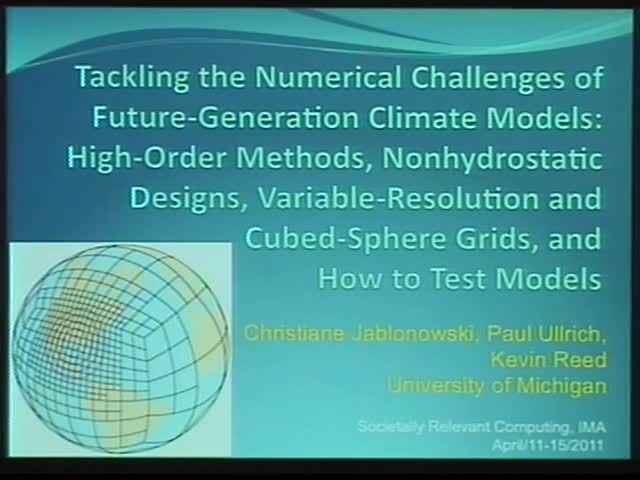Tackling the numerical challenges of future-generation climate models: High-order methods, nonhydrostatic designs, variable-resolution and cubed-sphere grids, and how to test models
Presenter
April 15, 2011
Keywords:
- Variable-resolution climate modeling, nonhydrostatic dynamical core, cubed-sphere grid, high-order finite-volume technique, model intercomparisons
MSC:
- 92F05
Abstract
Joint work with Paul A.Ullrich and Kevin A. Reed (University of Michigan).
Numerical predictions of high-impact local weather events and the vastly growing demand for regional-local climate predictions are grand challenge problems and one of the main drivers for
novel atmospheric models that are ready for high-performance computing architectures. Future-generation atmospheric General Circulation Models (GCMs) and their fluid dynamics components (the so-called dynamical cores) will likely rely on both high-order accuracy and variable-resolution techniques in order to seamlessly capture the multi-scale flow regimes.
The talk surveys the design of conservative and highly accurate numerical methods for an Adaptive-Mesh-Refinement (AMR) dynamical core of a GCM. In particular, the talk discusses a fourth-order finite-volume scheme for a nonhydrostatic dynamical core on a cubed-sphere grid that makes use of an implicit-explicit Runge-Kutta-Rosenbrock time integrator and Riemann solvers. The talk overviews the algorithmic steps, presents results from idealized dynamical core test cases, outlines the inclusion of AMR into the model design and discusses strategies how to test and intercompare GCMs.
